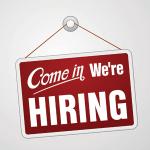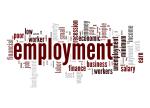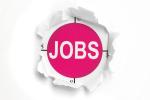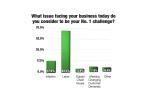WASHINGTON — The National Federation of Independent Business (NFIB) Small Business Optimism Index rose by eight points to 101.7 in November, the first time in 34 months it surpassed the 50-year average of 98.
This is the highest reading since June 2021, the organization reports. Of the 10 Optimism Index components, nine increased, none decreased, and one was unchanged.
“The election results signal a major shift in economic policy, leading to a surge in optimism among small-business owners,” says NFIB Chief Economist Bill Dunkelberg. “Main Street also became more certain about future business conditions following the election, breaking a nearly three-year streak of record high uncertainty. Owners are particularly hopeful for tax and regulation policies that favor strong economic growth as well as relief from inflationary pressures. In addition, small-business owners are eager to expand their operations.”
Key findings include:
- The net percentage of owners expecting the economy to improve rose 41 points from October to a net 36%, the highest since June 2020. This component had the greatest impact on the overall increase in the Optimism Index.
- The net percentage of small-business owners believing it is a good time to expand their business rose eight points to a net 14%. This is the highest reading since June 2021.
- The net percentage of owners expecting higher real sales volumes rose 18 points to a net 14% (seasonally adjusted), the highest reading since February 2020.
- A net 5% of owners reported paying a higher rate on their most recent loan, unchanged from October’s lowest reading since January 2022.
- Twenty-eight percent (seasonally adjusted) plan capital outlays in the next six months, up six points from October. This is the highest reading since January 2022.
- The frequency of reports of positive profit trends was a net negative 26% (seasonally adjusted), up seven points from October and the highest reading of this year.
- Twenty percent of owners reported that inflation was their single most important problem in operating their business (higher input and labor costs), down three points from October and surpassing labor quality as the top issue by one point.
- Thirty-six percent (seasonally adjusted) of all owners reported job openings they could not fill in the current period, up one point from October.
As reported in NFIB’s monthly jobs report, a seasonally adjusted 36% of all small-business owners reported job openings they could not fill in November, up one point from October. Of the 55% of owners hiring or trying to hire in November, 87% reported few or no qualified applicants for the positions they were trying to fill.
Fifty-four percent of owners reported capital outlays in the last six months, unchanged from October. Of those making expenditures, 39% reported spending on new equipment, 22% acquired vehicles, and 14% improved or expanded facilities. Twelve percent spent money on new fixtures and furniture and 7% acquired new buildings or land for expansion.
Twenty-eight percent (seasonally adjusted) plan capital outlays in the next six months, up six points from October and the highest reading since January 2022.
A net negative 13% of all owners (seasonally adjusted) reported higher nominal sales in the past three months, seven points better than October’s worst reading since July 2020. The net percentage of owners expecting higher real sales volumes rose 18 points to a net 14% (seasonally adjusted), the highest reading since February 2020.
The net percent of owners raising average selling prices rose three points from October to a net 24% seasonally adjusted. Twenty percent of owners reported that inflation was their single most important problem in operating their business, down three points from October and surpassing labor quality as the top issue by one point. Unadjusted, 11% reported lower average selling prices and 32% reported higher average prices.
Price hikes were the most frequent in the wholesale (50% higher, 4% lower), finance (46% higher, 4% lower), retail (43% higher, 3% lower), and services (35% higher, 10% lower) sectors. Seasonally adjusted, a net 28% plan price hikes in November.
Seasonally adjusted, a net 32% reported raising compensation, up one point from October and a historically very strong reading. A seasonally adjusted net 28% plan to raise compensation in the next three months, up five points from October and the highest reading of the year.
Reports of labor quality as the single most important problem for business fell one point from October to 19%. Labor costs reported as the single most important problem for business owners rose three points to 11%, only two points below the highest reading of 13% reached in December 2021.
The frequency of reports of positive profit trends was a net negative 26% (seasonally adjusted), up seven points from October and the highest (least negative) reading of this year. Among owners reporting lower profits, 32% blamed weaker sales, 18% blamed the rise in the cost of materials, 13% cited labor costs, and 9% cited lower selling prices. For owners reporting higher profits, 53% credited sales volumes, 21% cited usual seasonal change, and 13% cited higher selling prices.
Four percent of owners reported that all their borrowing needs were not satisfied. Twenty-six percent reported all credit needs were met and 62% said they were not interested in a loan. A net 7% reported their last loan was harder to get than in previous attempts. Five percent of owners reported that financing was their top business problem in November, up two points from October.
The NFIB Research Center has collected Small Business Economic Trends data with quarterly surveys since the fourth quarter of 1973 and monthly surveys since 1986. Survey respondents are randomly drawn from NFIB’s membership.
Have a question or comment? E-mail our editor Dave Davis at [email protected].









































































